Buckeye, AZ Pollen and Allergy Report for Summer 2023
Pollen Allergy Trends in Buckeye, AZ
When is pollen lowest in Buckeye, AZ?

February
Lowest month total PPM
Avg. PPM
When is pollen highest in Buckeye, AZ?

March
Highest month total PPM
Avg. PPM
How does pollen in Buckeye, AZ compare to Arizona?
Buckeye has a higher average PPM than the state of Arizona.
Buckeye yearly avg PPM:
Arizona yearly avg PPM:
How does pollen in Buckeye, AZ compare to the USA?
Buckeye has a lower average PPM than the USA.
Buckeye yearly avg PPM:
USA yearly avg PPM:
Is pollen worse this year in Buckeye, AZ?
Spring 2023 was better than spring 2022.
Spring 2023 PPM:
Spring 2022 PPM:
Average PPM in Buckeye, AZ
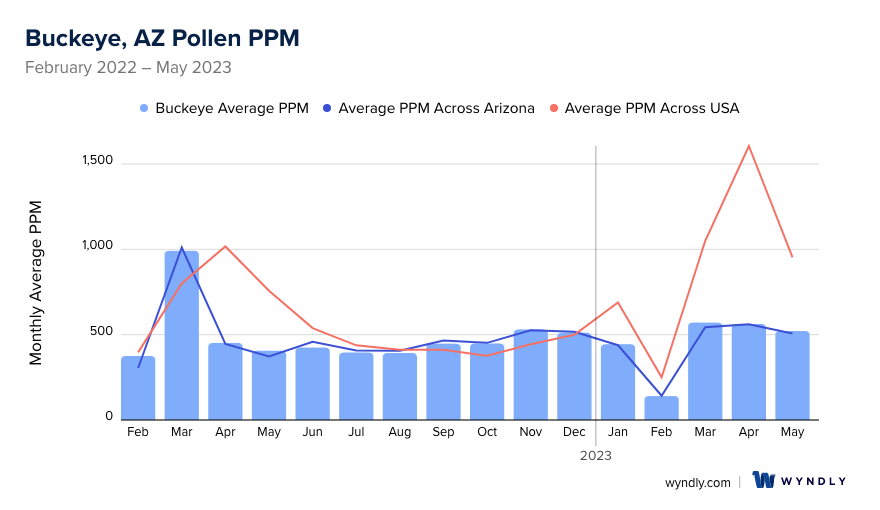
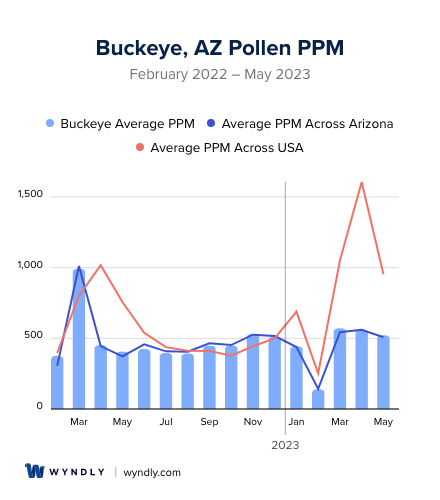
Buckeye, AZ Pollen and Allergy Breakdown by Month
Grass
When is grass pollen highest in Buckeye, AZ?
May has the highest grass pollen in Buckeye, AZ with an average PPM of
When is grass pollen lowest in Buckeye, AZ?
December has the lowest grass pollen in Buckeye, AZ with an average PPM of
Tree
When is tree pollen highest in Buckeye, AZ?
March has the highest tree pollen in Buckeye, AZ with an average PPM of
When is tree pollen lowest in Buckeye, AZ?
July has the lowest tree pollen in Buckeye, AZ with an average PPM of
Weed
When is weed pollen highest in Buckeye, AZ?
November has the highest weed pollen in Buckeye, AZ with an average PPM of
When is weed pollen lowest in Buckeye, AZ?
February has the lowest weed pollen in Buckeye, AZ with an average PPM of
Buckeye, AZ Pollen Monthly Breakdown by Pollen Type
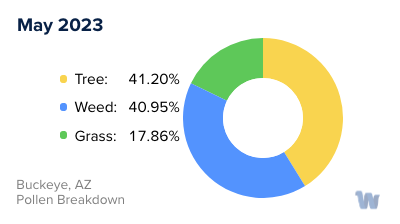
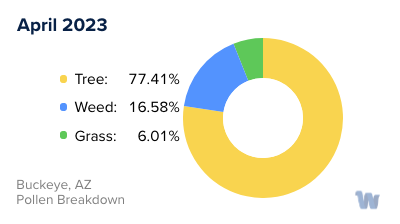
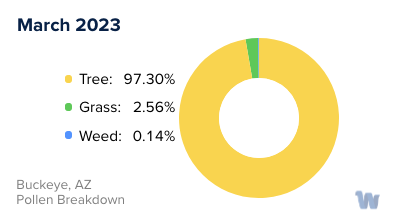
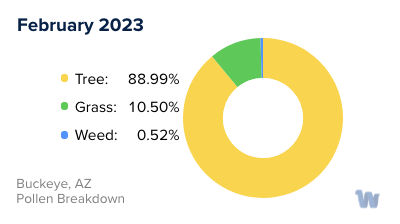
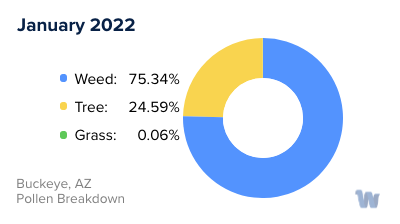
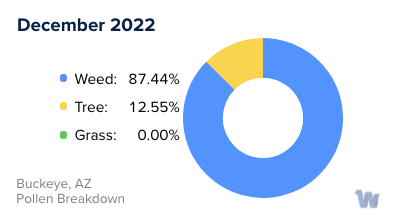
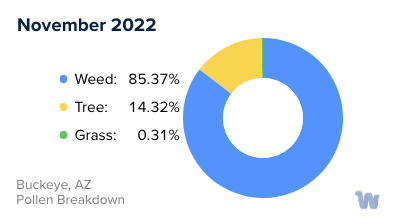
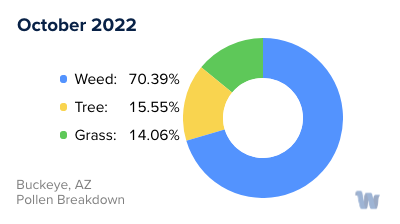
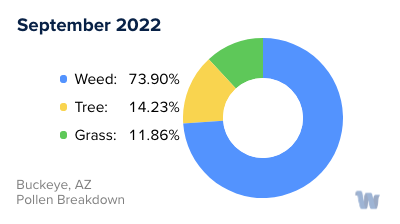
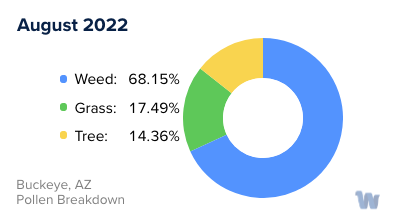
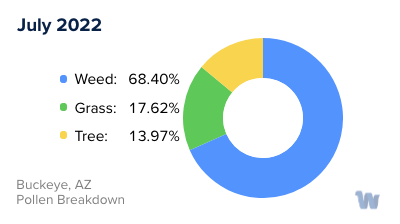
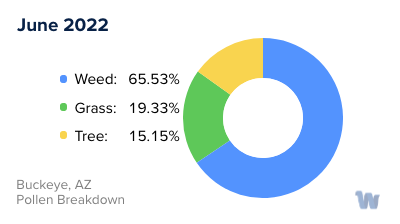
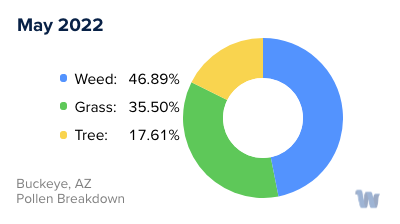
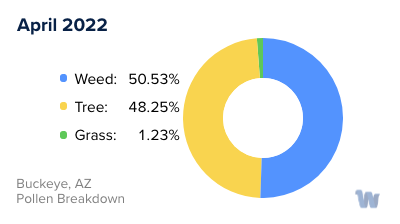
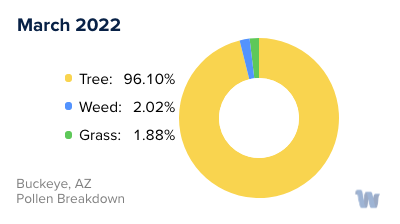
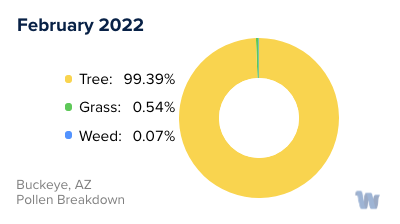
Pollen and Hay Fever in Buckeye, AZ
Pollen allergies, also known as hay fever or seasonal allergies, are a common concern in Buckeye, Arizona. Unlike other locations that experience seasonal shifts in allergens, Arizona's dry and warm climate allows allergy season to persist year-round. The primary producers of pollen in this region are grasses, trees, and weeds.
Pollen allergies in Buckeye are not confined to one season but can occur at any time of the year. The intensity of symptoms can vary depending on the type of pollen and the time of the year. Grass pollen is most abundant during the summer months, while weeds typically produce pollen in the fall. However, certain weed species can release pollen into the winter. Tree pollen is prevalent in both the winter and spring.
Given the year-round allergy season, residents of Buckeye, and those planning to visit, should be particularly mindful of pollen counts in April, May, and September. These months typically see a peak in seasonal allergies. During these periods, it's advisable to limit outdoor activities or to schedule them for the evening when pollen counts tend to be lower.
The types of pollen in Buckeye, Arizona, come from a variety of sources. Some of the most common allergens include ragweed, Bermuda grass, and Russian thistle. A number of trees also contribute to the pollen count, including ash, mesquite, mulberry, cottonwood, oak, and olive trees. Each of these has a unique pollen season contributing to the year-round allergy season in the region.
Understanding the types of pollen and their respective seasons can help those affected to anticipate and prepare for periods of heightened allergy symptoms. Despite the challenges, many residents manage to live comfortably in Buckeye, finding ways to coexist with the pollen-producing flora that make Arizona a unique and diverse environment.

